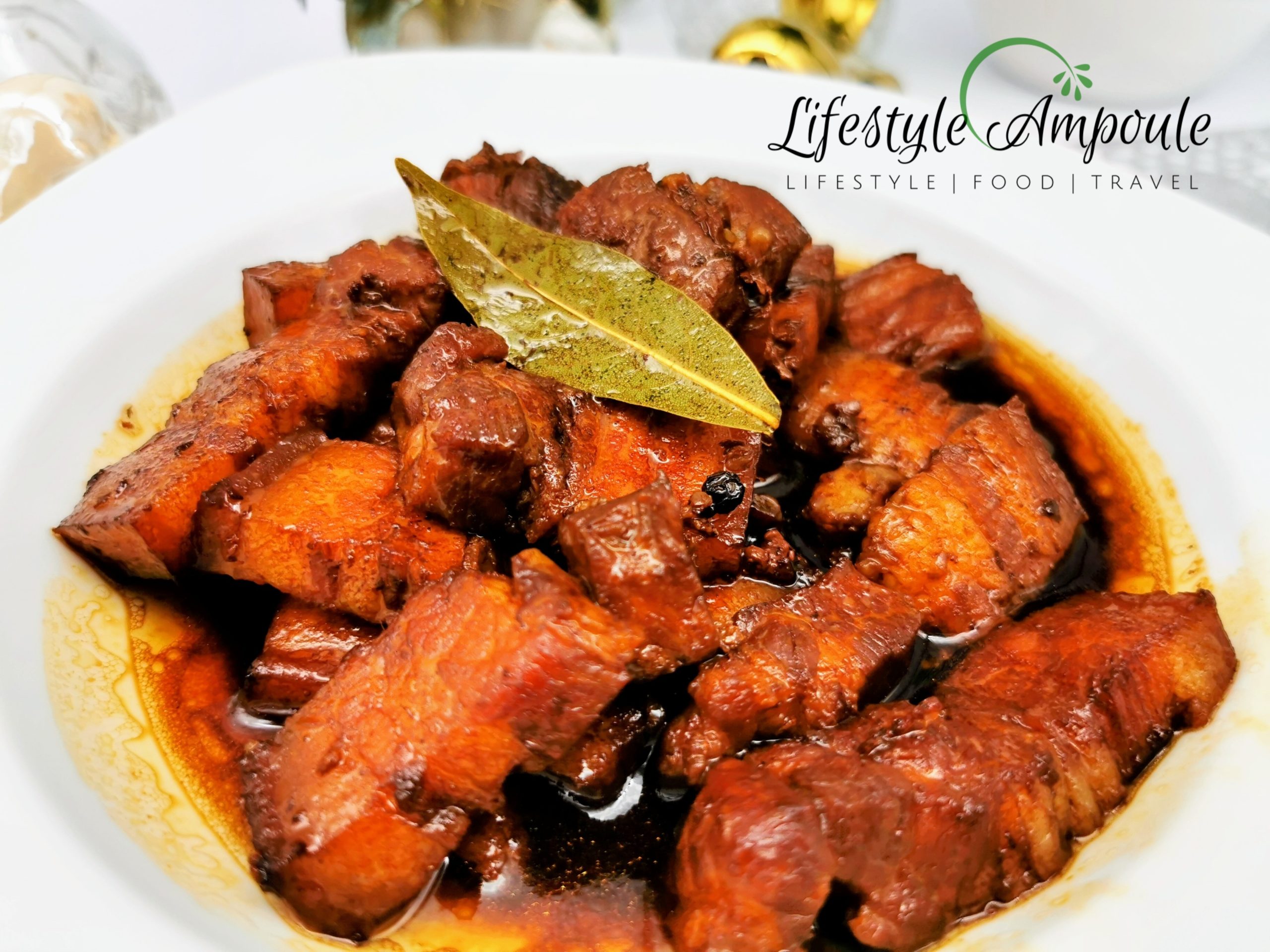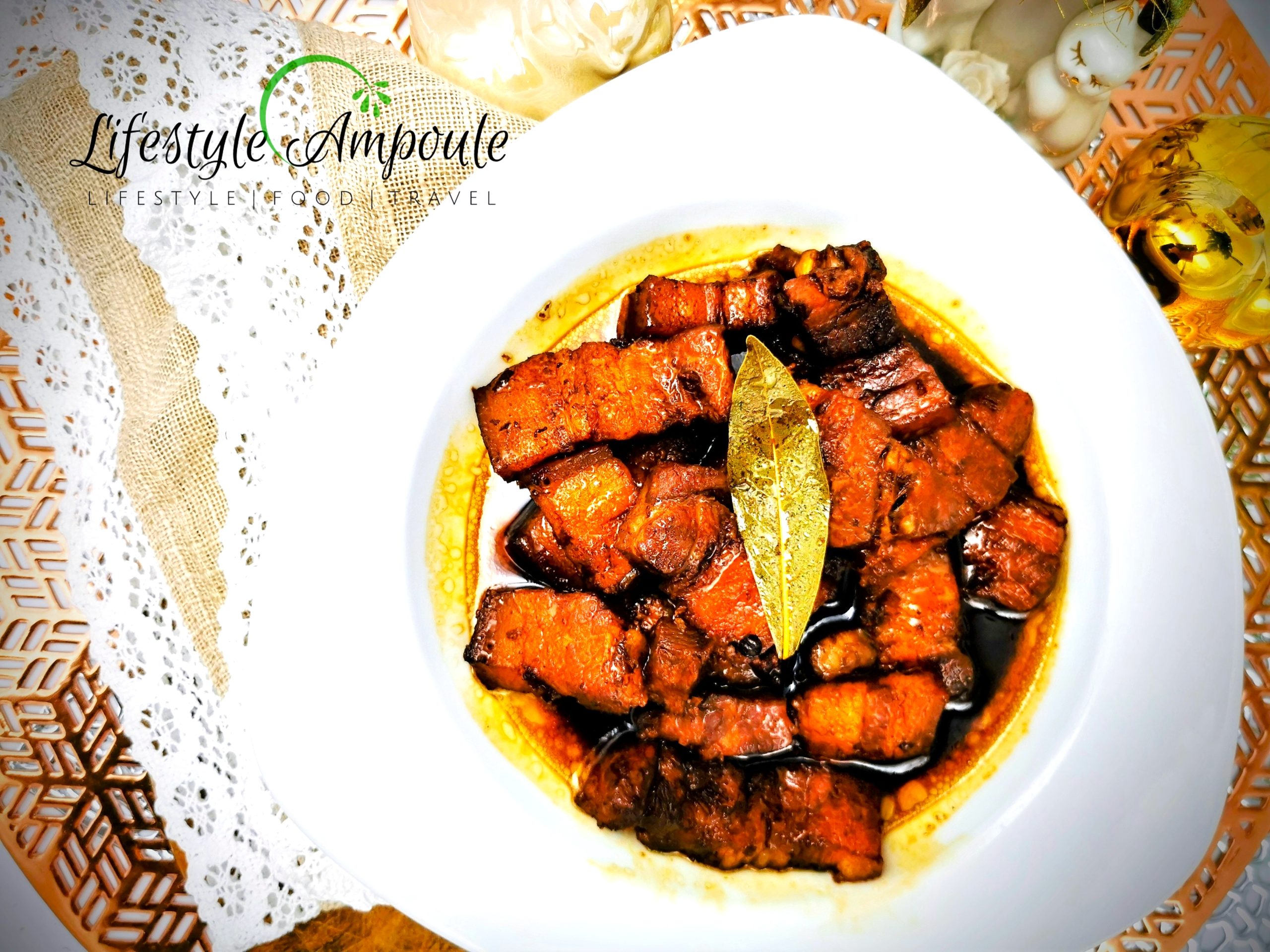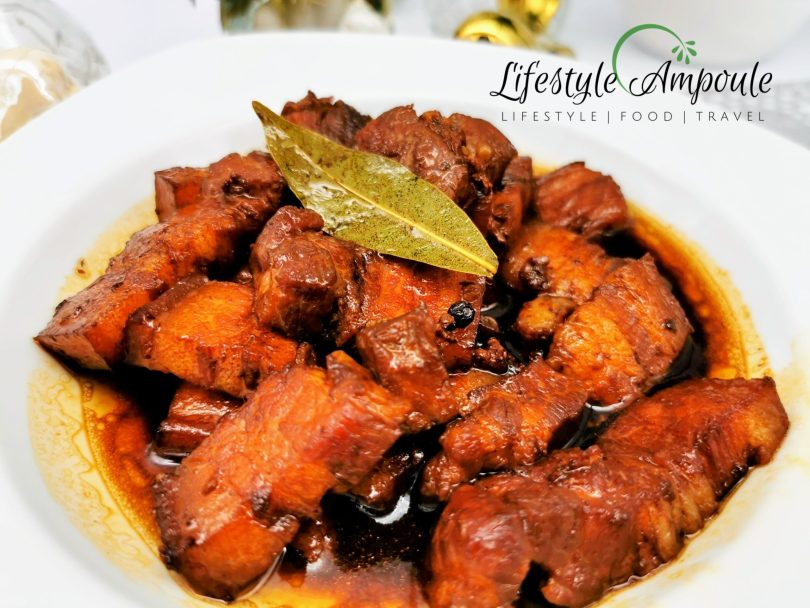Best Pork Adobo Recipe
Pork Adobo is a delicious Filipino dish that combines
pork with soy sauce, garlic, and vinegar.
There is nothing more Filipino than Pork Adobo. Each island in the Philippines has their own version of the dish, and even the regions within have their own versions! You may be wondering, “Why is pork adobo so loved?”
Well, the answer is simple. It’s delicious! The combination of the fatty pork cooked in a bunch of sauces, makes every bite rich and flavorful. The pork is incredibly tender and soft, and goes so well with some rice. But you may still be a bit confused on what exactly pork adobo is, and that’s okay. I’ll explain it to you!

What is pork adobo?
The word “adobo,” comes from the word “adobar” in Spanish. This means to marinate – both dry and liquid marinades fit this definition. In Filipino pork adobo, the pork is marinated in soy sauce, crushed garlic, and, in some parts, vinegar.

Usually pork belly is used in pork adobo, because of its fatty nature. The fattiness of the pork belly and the acidity of the marinade pair well together. It is usually served over a bed of rice that soaks up all the saucy goodness!
As I previously mentioned, there are many varieties of pork adobo. Some people add potatoes, eggs, tofu, or even make it spicy. If you like any of these ingredients, feel free to add them into your pork adobo.
Alternatives
Due to pork adobo’s versatile nature, you can really make it however you want. I recommend following my recipe as is the first time, then switching it up how you like. Below are some ways you can change up the recipe.
- If you are trying to eat less fatty foods, you can switch out the pork belly for a different cut of pork. It is still best to go with a cut of pork that has at least some fat on it, as it will taste better in the recipe. Going for a lean cut like tenderloin may come out a bit dry.
- Onions are optional, but can add some extra flavor. Any onion can work in adobo, so use what you have.
- Adding in some bay leaves during the cooking process adds another level of flavor to your pork adobo. However, if it is too difficult to find, you can skip it.
- Adobo is just the style of cooking, so you can replace the protein as well. Chicken is another popular adobo dish.
- You can go “Vegetarian” by substituting meat to Tofu! Eggplant Adobo is another vegetarian alternative!
Pork Adobo is a classic Filipino dish and for good reason. It is tangy, savory, fatty, and just all around delightful! It is the perfect comfort food, and can cheer you up after a long day. It may not be the healthiest food out there, but enjoying pork adobo once in a while is okay! The dish is good for the soul.
Give this traditional Filipino recipe a try, and let me know in the comments how you enjoyed it!
Please visit the rest of my page for more recipes HERE
Pork Adobo Recipe
Ingredients
- 1 kilo pork belly, sliced
- 1½ tablespoon garlic, minced
- 1 teaspoon whole peppercorn
- 4 pieces dried bay leaves
- ½ cup soy sauce
- 2 cups water
- 1 tablespoon sugar
- 4 tablespoon vinegar
- 2 tablespoon cooking oil
- salt to taste
Instructions
- Heat pot over medium heat. Add oil and saute pork belly until slightly brown, add garlic and continue sauteeing until garlic turns golden brown.
- Add soy sauce, let steam for a few seconds before adding the water, peppercorns and bay leaves then bring to a boil.
- Simmer for about 45 minutes. Add sugar then mix thouroughly. Add vinegar (do not mix) then let simmer for about 10 minutes.
- Add salt according to preference.
- Serve with steamed rice or mashed potatoes. Enjoy!




